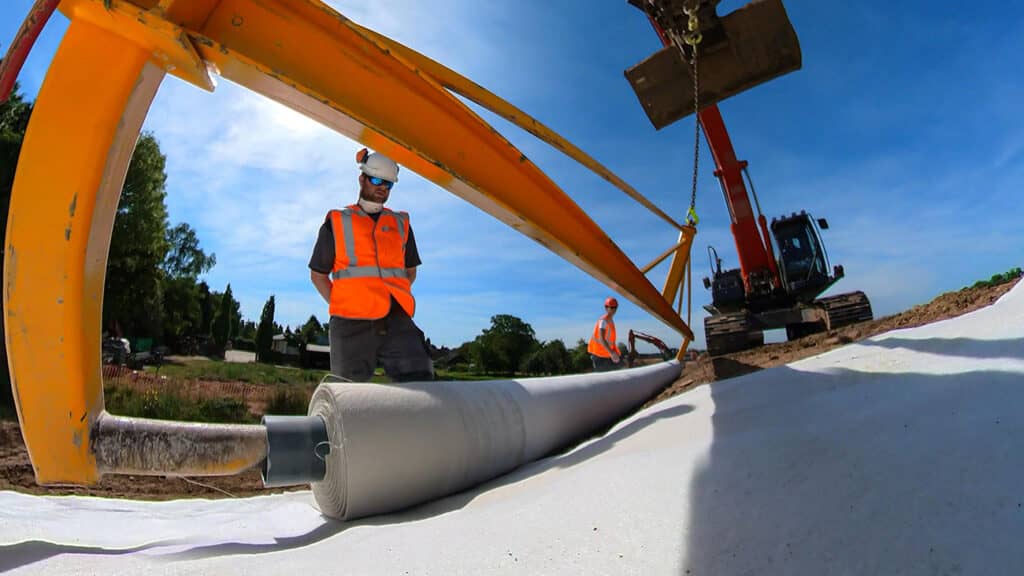What is Geotextile Non Woven?
Geotextile non woven (a non-woven geotextile) is manufactured from cross-linked and high-quality thermally bonded polypropylene fibers.
With these exceptional hydrolysis properties, these Geotextiles non woven exhibit the highest specific tensile strength in the range and are used for (lightweight) separation, filtration, and protection applications, where these are ideal for filter infiltrations and the encasement of drainage trenches.
The hydraulic properties encourage the build-up of a natural soil filter, providing wonderful filtration stability over the long term.
Geotextile non woven is also used for various applications such as access roads where high water permeability is desired, paved pitches, roads and railroads, drainage layers and parking lots.
The thermal and mechanical bonding process maintains the same quality at lower weight and thickness, with the advantage of lower transportation costs.
Lighter Geotextile non-wovens are commonly used as visual signaling fabric or to separate soil types preventing, for example, sand and/or granules of good quality from mixing with the underlying soil.
Medium Geotextile non-wovens are commonly used for infiltration and protection of underlying materials such as foils, pipes and infiltration crates.
Heavy Geotextile non-wovens (weight > approx. 2 kilograms/m2) are commonly used in critical protection conditions such as landfills and heavy bank construction such as during the installation of landfill stones in banks and levees.
Features and benefits
Geotextiles non woven – Lifespan of Geotextile NonWoven is at least 100 years.
Thermal and mechanical bonding process ensures superior performance at lower weight and thickness with the benefit of lower transportation costs.
The product allows water flows perpendicular to the plane.
Suitable for various soil types thanks to a wide range of products of different opening diameters.
Excellent mechanical robustness and hydraulic properties.
Significant reduction in carbon footprint and cost compared to traditional methods.
Applications
(Access) roads, Paved pitches , parking lots , railroads , drainage ditches
landfills , coastal protection areas , industrial sites , granular drainage layers
Also read: civil engineering


